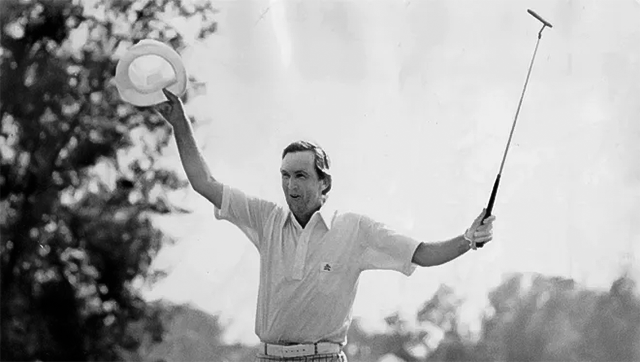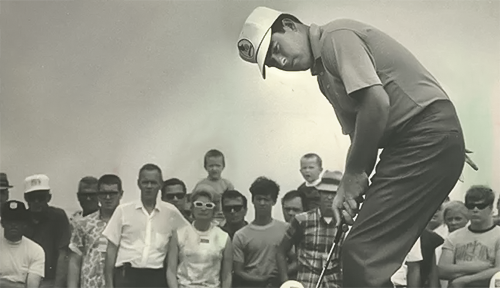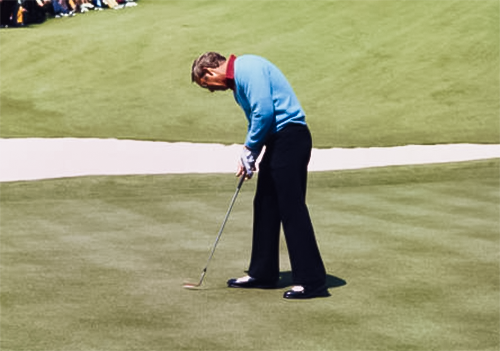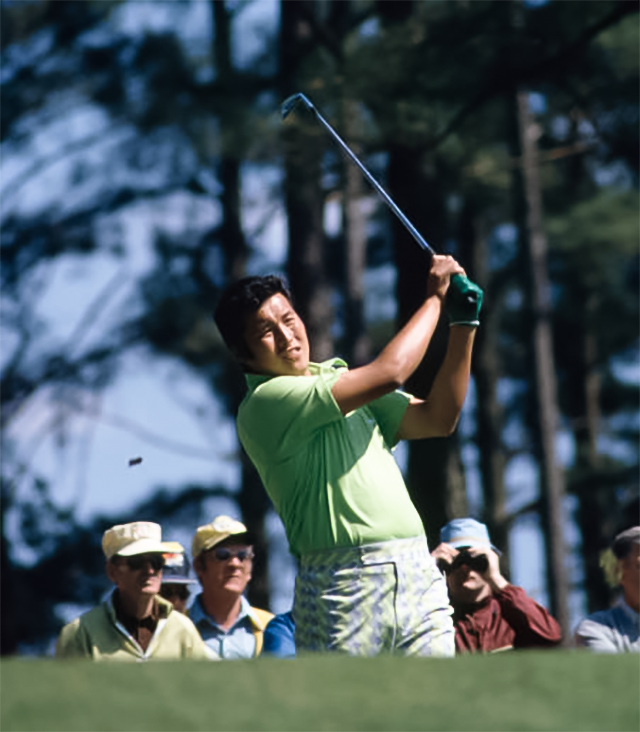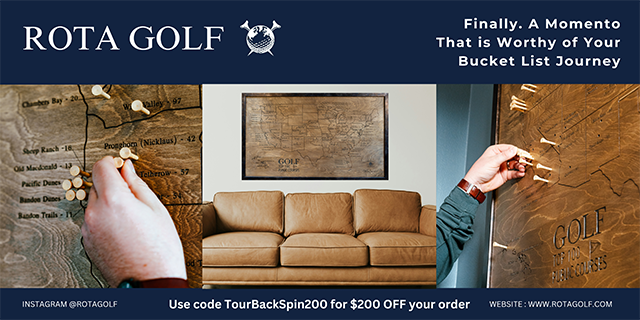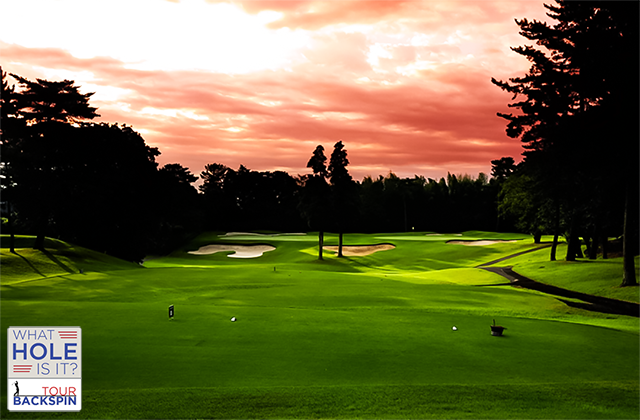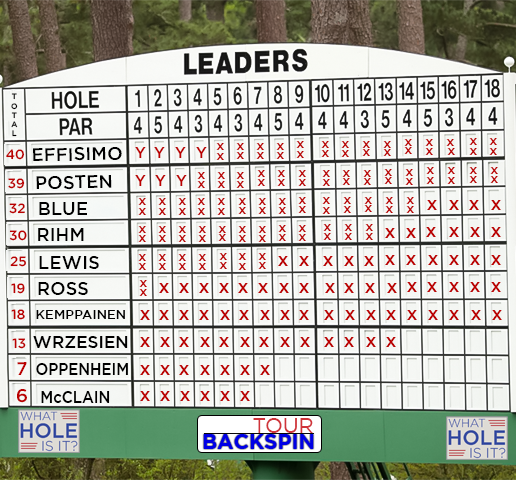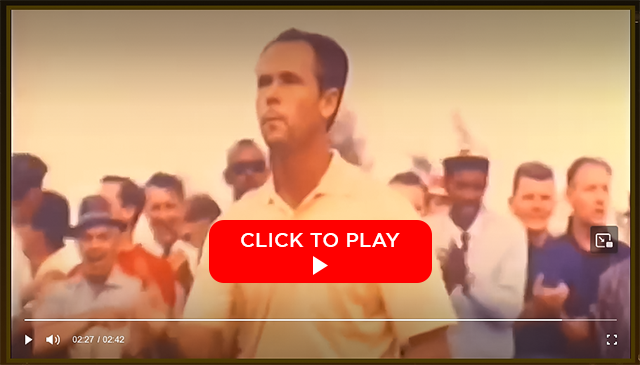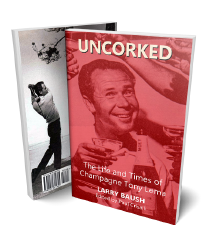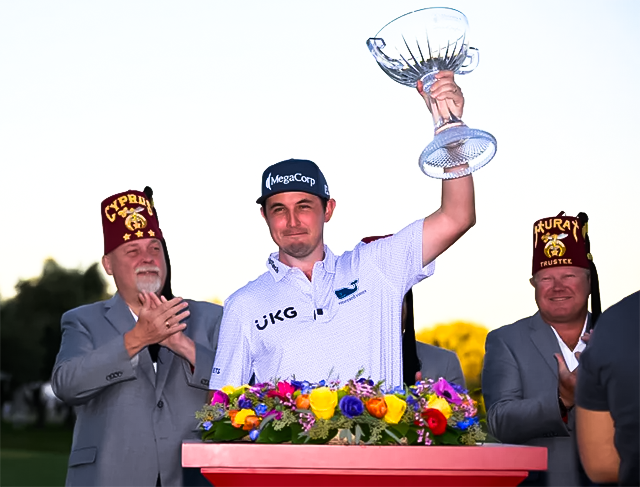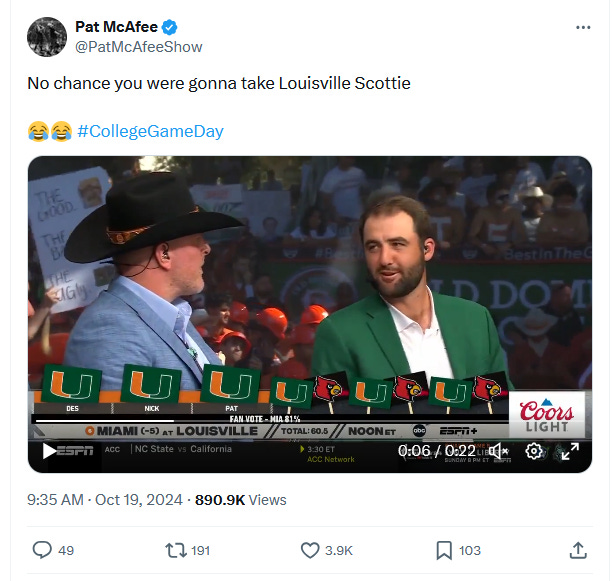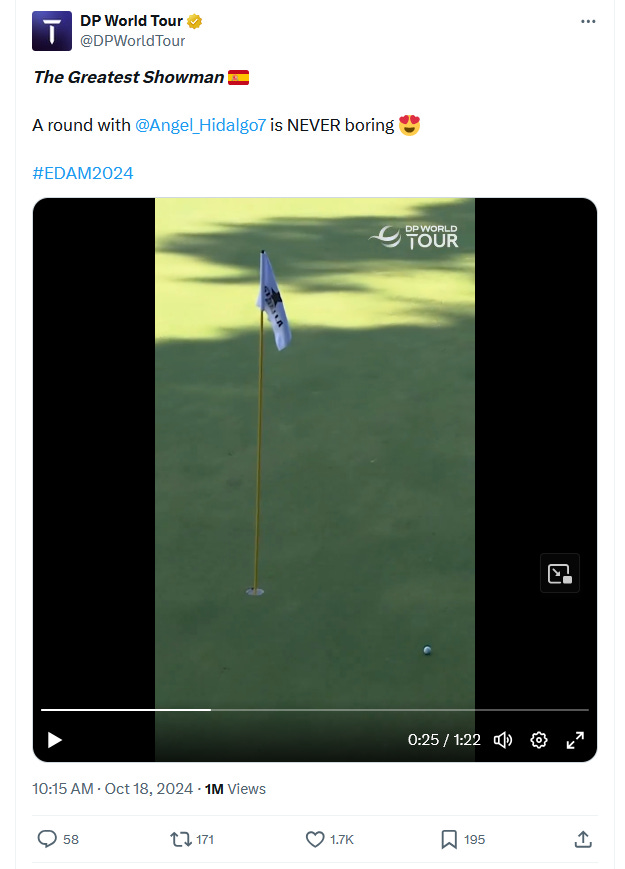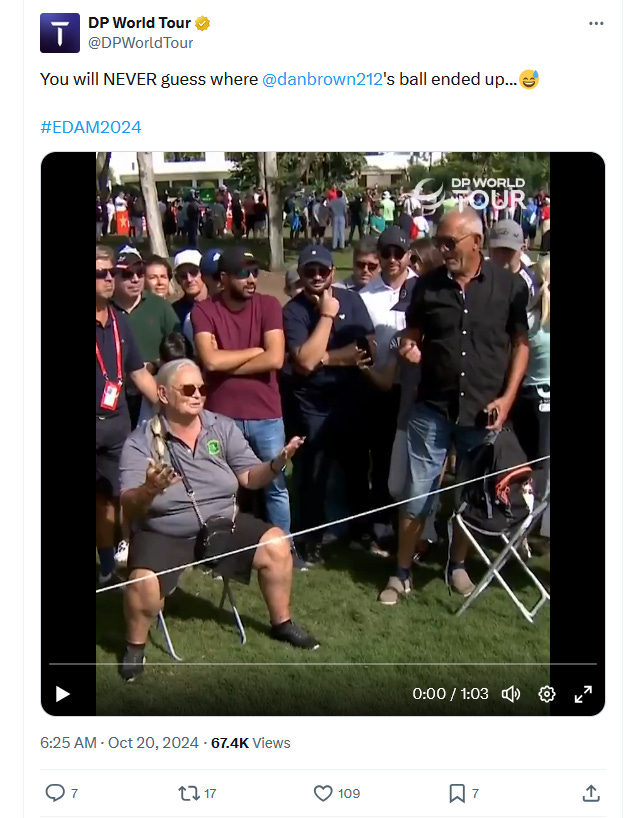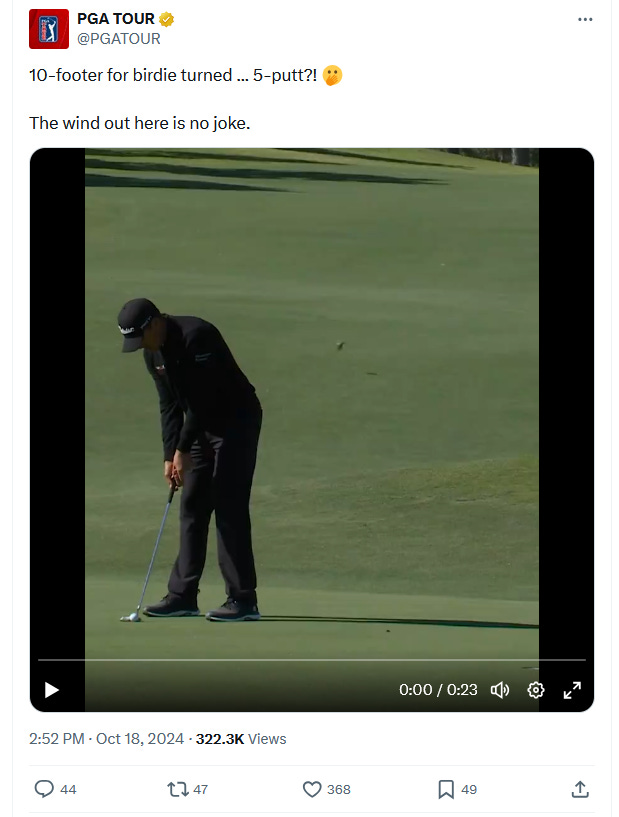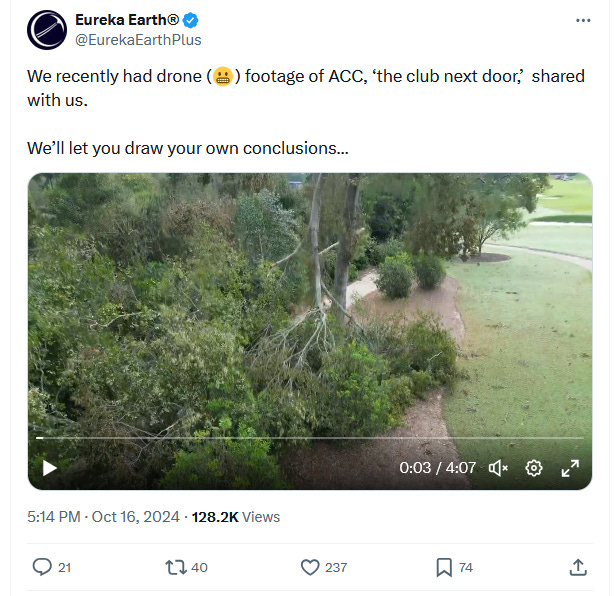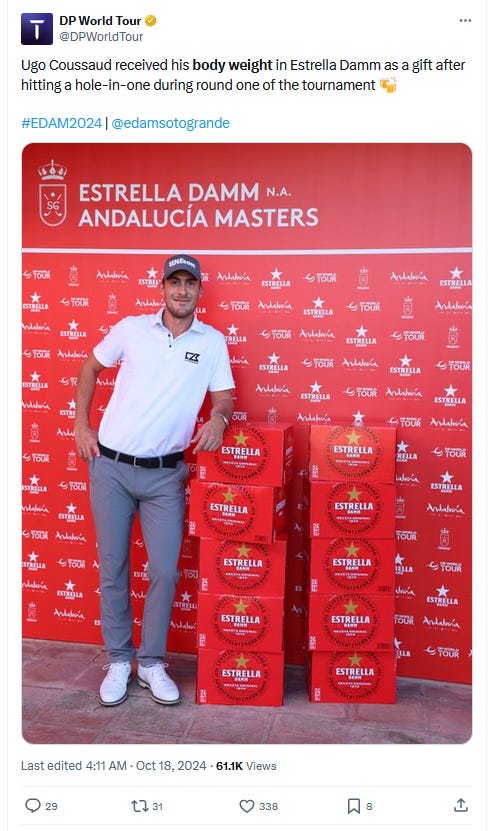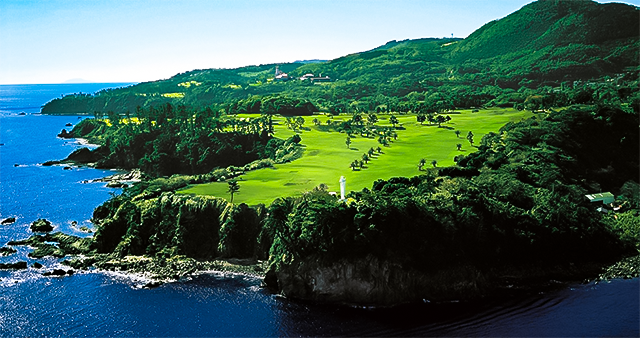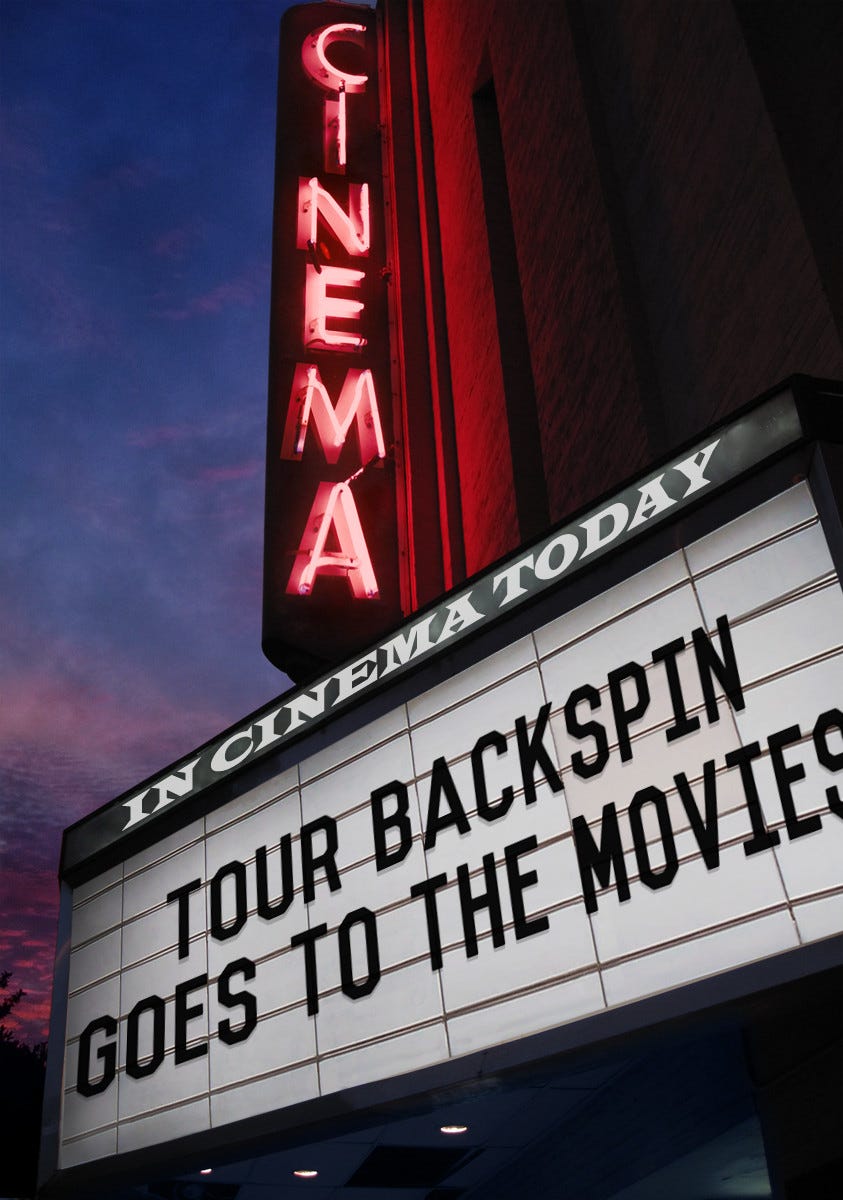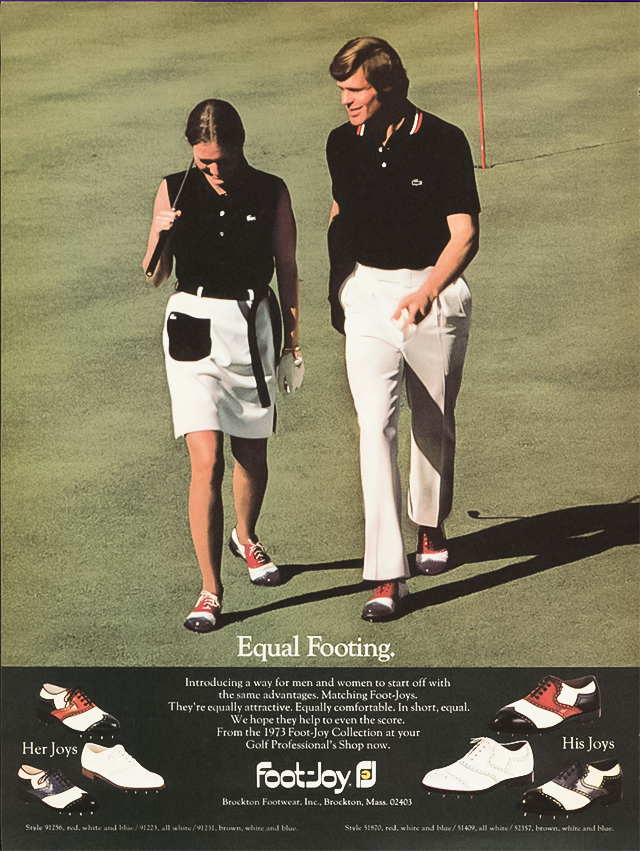Japan Beats Team USA by 17
The team from Japan put on a beatdown in final round of the 1973 Japan-US Golf Tournament
The PGA TOUR visits Japan this week for the Zozo Championship at Accordia Golf Narashino Country Club in Chiba, Japan. Our journey through the past takes us back to 1973 and a tournament many either haven’t heard of, or don’t remember. We dug as deep as we could into this obscure competition that resembled a collegiate golf match pitting nine golfers from the United States versus nine from Japan. There was also an individual component to the competition. Scroll down to learn more about this unique tournament from yesteryear.
For more golf action from Japan, I’ve written about the country’s Francis Ouimet moment in 1957 at the Canada Cup HERE, Isao Aoki breaking the scoring record at the 1980 U.S. Open HERE, and Tony Lema’s Shell’s Wonderful World of Golf match against Chen Chig-Po at Kawana Hotel and Golf Club in Shizuoka, Japan, HERE.
The tour was in Vegas for the Shriners Children’s Open at the TPC Summerlin. The tour has a long history in Vegas. Wind played havoc in the third round last week as pros attempted to secure a place into signature events, or improve their FedEx point standings. Scroll down as I provide a few of my thoughts, as well as the Clips You Might Have Missed.
We’ve got a question for you to weigh in on with the Tour Backspin Poll. This week’s Music Clip has Ann Peebles doing “I Can’t Stand the Rain” live on “The Midnight Special” in 1973. Tour Backspin Goes to The Movies, has the 1973 theatrical trailer for “Badlands” featuring a very young Martin Sheen. Scroll down to listen and watch.
The Swing Like a Pro features Masashi “Jumbo” Ozaki’s swing in slow motion. The WHAT HOLE IS IT? Presented by Rota Golf this week has a hole that should be pretty easy to figure out. Submit your answer and you may just win a golf swag prize pack which includes our new 19th Hole Hot Sauce (soon to be available online in the Tour Backspin Golf Shop). Rota Golf has a cool way to map out your bucket list journey of playing the top 100 courses in the U.S. that you should check out. Click on the Rota Ad to view more. We’ve got some links for you in the Check it Out section and an ad from 1973 that was ahead of its time as far as gender equal footwear was concerned is featured in this week’s Vintage Ad. Scroll down to view.
The Tour Backspin Poll
Last week we wanted to know what you used for a ball marker on the green. There were 40% of respondents who answered that they use a lucky coin, and 20% each that said they used a souvenir poker chip, a fancy magnet pop-out marker, or a tee/plastic marker. I’m shocked that 0% admitted to using the blue inner lining from a Miller Lite bottle/can cap.
Since we asked about ball markers last week, let’s turn our attention to what kind of tee you use. Let us know in this week’s Tour Backspin Poll.
We’re playing Japanese Golf Trivia in this week’s Tour Backspin Quiz. Scroll down to play.
Did you miss a previous newsletter? You can view it HERE. Help us grow Tour Backspin! Please forward this email to a friend. Was this newsletter forwarded to you? You can sign up HERE.
Okay, we're on the tee, let's get going.
Enjoy!
Larry Baush
Japan Dominates Team USA in Final Round of Team Competition While Geiberger Captures Individual Title
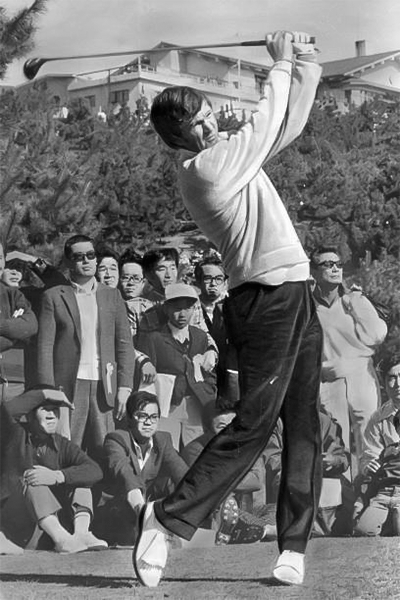
It is Thursday, May 17th, 1973, and The Vancouver Sun, as well as other newspapers, ran brief mentions, usually in the “Sports In Shorts” feature in their sports pages, announcing the team in the third annual ABC Japan vs USA Golf Matches to be held November 23rd to the 25th. The 54-hole tournament was a match between the two countries and consisted of nine-man teams playing stroke play. Results were based on the aggregate score of the best eight scores each day. Along with the team competition, there was also an individual component to the tournament.
Arnold Palmer, was the only foreign player in a two-day tournament at the Kawasaki Kokusai Country Club in Tokyo on the weekend of November 11th and would be staying in Japan for the team event that would be played at the ABC Golf Club in Katō, Hyōgo.
The U.S.-Japan Golf Tournament offered a purse of $109,090 with the individual winner getting $17,857.
The other members of the U.S. team consisted of Tommy Aaron, Doug Sanders, Chi Chi Rodríguez, Dave Stockton, Ray Floyd, Al Geiberger, Dave Marr, and Tom Shaw. The Japanese team was made up of Takaaki Kono, Teruo Sugihara, Takashi Kurihara, Masashi “Jumbo” Ozaki, Haruo Yasuda, Yoshitaka Yamamoto, Kosaku Shimada, Shigeru Uchida, and Takashi Murakami.
The ABC Golf Club was designed by two prominent Japanese golf architects, Shoichi Suzuki and Ken Sato and measured 7,235-yards and played to a par of 72. The hillside course demands accuracy and from the second floor of the clubhouse, a panoramic view of the signature 18th hole, with the large lake fronting the green, and the mountains of Harima in the background, are on full display.
The U.S.-Japan Golf Tournament offered a purse of $109,090 with the individual winner getting $17,857. The tournament was founded in 1971 as the Miki Gold Cup and the inaugural event was won by the United States with a winning margin of nine strokes. The individual winner was Billy Casper. The format in 1971 used the aggregate of the best seven scores shot each day.
Also in 1973, the tournament would be televised in Japan by Asahi Television.
In 1972, the tournament was renamed the ABC Japan vs USA Golf Matches, which was too cumbersome for U.S. newspapers who called it the U.S.-Japan Golf Tournament. It was won again by the U.S. team, this time by 18 strokes, and Tommy Aaron won the individual title.
For 1973, the format was changed to using the aggregate score of the best eight scores from the nine-man teams each day. Also in 1973, the tournament would be televised in Japan by Asahi Television.
The first round was played on Friday, November 23rd, and Dave Stockton came in with the lowest round of the day. His one-under-par 71 featured two birdies and one bogey. Al Geiberger was in second place after shooting an even-par 72 and he was tied with three Japanese players; World Cup veteran Takaaki Kona, Teruo Sugihara, and Takashi Kurihara. The star of the Japanese Tour, Masashi “Jumbo” Ozaki, had a bad day with a round of nine-over-par 81. Arnold Palmer came in with a mediocre three-over-par 75.
The U.S. team held a five-shot lead with a score of 597.
In Saturday’s second round, Al Geiberger grabbed the lead shooting a 70 and led by one-stroke over Kosaku Shimada who also came in with a 70. But it was Jumbo Ozaki who made news by setting a new course record with a 65 and jumped up into fifth place. The previous course record was 70. In front of Ozaki was Stockton who shot a 73, and Chi Chi Rodíguez who added a 69 to his first round 76. The round of Rodíguez would have been a course record if not for Ozaki’s round. Arnold Palmer recorded a 72 and was tied with Takashi Murakami at 147.
In the team event, Japan took the lead, by one-stroke, with a score of 1,179 setting up an exciting Sunday finish.
The final round featured very high scores as Geiberger won with a final round score of 76 which gave him a two-stroke margin over Takashi Murakami. Other scores were much higher as Palmer shot a 74 yet still moved up into third place.
Starting the day with a one-stroke lead in the team event, Japan stretched that out to a winning margin of 17-strokes behind the strength of two 73s shot by Murakami and Huruo Yasuda, the two best scores of the day.
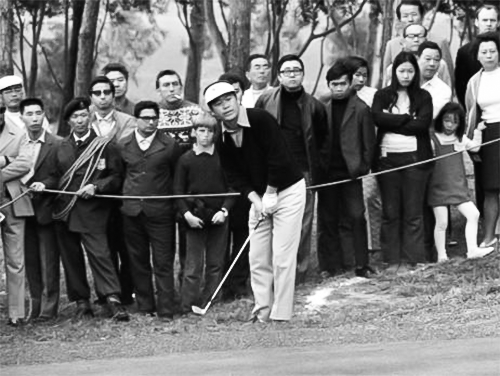
This was the first victory for the Japanese team in the three years of the event and highlighted the power of the Japanese Tour and its star players. The Japanese victory also propelled the event that ran as a team competition until 1987 when it transformed into a 72-hole individual event on the Japan Tour. It is currently played on the same ABC Golf Club in Katō, Hyōgo.
Next Week: Billy Casper wins his last title, before becoming a senior player, at the 1977 Mexican Open
BONUS STORY
The Japan Tour was founded in 1973, and quickly attracted players from around the world including the U.S. as the prize money offered was attractive. The competition on the tour help aspiring professionals to hone their game before returning to either the U.S. PGA Tour or the European Tour.
Masashi “Jumbo” Ozaki was the dominate player on the tour and first played the Masters in 1972. After finishing tied for 8th in the 1973 Masters, Jumbo told reporters that he wasn’t planning on playing in the U.S. full-time because he was making “enough money in Japan.” He also finished 6th at the U.S. Open in 1989 on the East Course at Oak Hill Country Club near Rochester, New York.
Before turning to golf, Ozaki was a professional baseball player as a pitcher and outfielder from 1965 to 1967 with the Nishitetsu Lions.
Ozaki led the money list a record 12 times, the most recent in 1998, and won 94 tournaments. He was inducted into the World Golf Hall of Fame in 2011.
What Hole is It? powered by Rota Golf. Doesn’t your bucket list journey deserve one of these?
WHAT HOLE IS IT?
Are you on the leader board?
Congratulations to David Rihm, who correctly identified #17, at TPC Summerlin in Las Vegas, NV, in last week’s WHAT HOLE IS IT? contest. David beat out five other correct answers in the random drawing. We’re sending a prize pack of golf swag, including the new Tour Backspin 19th Hole Hot Sauce, to Glenn.
We understand if a premium subscription isn’t in the budget, and we’re happy to have you here however you’ve arrived. You can sign up for a free subscription so you’ll never miss the newsletter. It will arrive in your inbox every Thursday. Paid subscribers help fund the work we do here at Tour Backspin.
We got our hands on a treasure trove of film that we are cleaning up and digitizing for the Tony Lema documentary. Some great footage of Tony in action and even home movies. Very exciting. Check out the trailer below.
PGA TOUR Wrap-Up | Shriners Children’s Open
J.T. Poston captured the Shriners Children’s Open but he didn’t make it easy on himself. The third round was interrupted by winds that caused a suspension in the round. There were 30 players still on the course, including Poston, who had to return to the course on Sunday morning to finish their rounds.
He entered the final round with a three-stroke lead and played flawlessly through 15 holes and enjoyed a four-stroke advantage over Doug Ghim. Ghim made an 11-foot eagle putt at the ninth hole to cut the lead to one before Poston birdied the 12th, 13th, and 15th holes to take the four shot lead. Then things got kind of interesting.
Poston missed a nervy six-foot birdie putt at the 16th hole and then an even shorter putt, this time for par, at the 17th hole. Ghim, playing alongside Poston, then birdied the final hole before Poston attempted his four-foot par putt that he now needed to make to win. He was able to sink the putt for a one-stroke victory.
“I just told myself this is what you dream of, you’ve got a putt to win on the PGA Tour and just try to forget about the last two (strokes),” Poston said. “I told myself I’ve made a million of these and just do one more.”
This was Poston’s third win on the PGA TOUR. The winning putt:
Clips You Might Have Missed
So good to have this guy back.
Scottie is living the life. The green jacket at the ESPN Gameday show.
How entertaining, and good, is Angel Hidalgo?
More fun from the DP World Tour.
Wind in Las Vegas leads to trouble on the green.
Drone footage of hurricane damage at Augusta Country Club.
Even more fun from the DP World Tour.
Tour Backspin Quiz | Guess The Clubhouse
What course in Japan is sometimes called “The Pebble Beach of Japan?”
Scroll down for answer
Swing Like a Pro
Masashi “Jumbo” Ozaki’s swing in slow motion.
Blind Shot
Click for something fun. 👀
Eben Novy-Williams of Sportico takes you inside the Masters TV deal with ESPN and CBS.
Tiger’s and Rory’s TGL golf league releases inaugural season schedule. See it at golfdigest.com
Tour Backspin Music Clip
“I Can’t Stand the Rain” performed live, on “The Midnight Special” in 1973.
Tour Backspin Quiz Answer:
The Kawana Hotel and Golf Club, Fuji Course, in Shizuoka, Japan, is called “The Pebble Beach of Japan.”
Thank you for reading this far, I know your time is valuable and choosing to spend some of it on what I’ve created is gratifying. If you want to help support the work we’re doing, please consider upgrading. It’s just $36 a year and you’ll be helping to tell the stories from one of golf’s golden ages.
Vintage Ad
Final Thoughts
What a piece of land that Kawana sits on
I loved those FootJoy shoes, especially how they looked on women golfers.
I know I would receive far fewer cases of beer for a hole-in-one than Ugo Coussaud did. How about you?





